I will be honest: I never imagined myself to be a runner. But somewhere between one-mile jogs around the neighborhood and my first 5K, I began to enjoy running. My first ever running shoe was from ASICS but after that, I quickly became a HOKA girlie and have since owned three different styles. However, I often see runners and commuters wearing Brooks sneakers and was tempted enough to road test two styles.
Fit
When it comes to fit, each specific sneaker is a little different but the main difference is that HOKA offers thick cushioning while Brooks provides stability (more on that below). HOKA also offers rocker styles to propel you forward. Textiles, Paper & Apparel Lab Senior Analyst Emma Seymour and I both find Brooks shoes to run true to size.
Meanwhile, with HOKA running shoes, it can fluctuate. For example, for my first pair of Cliftons, I went for an 8.5 and they fit well (my shoe size runs between an 8 and and 8.5, but a half size up is comfortable in a pair of running shoes so your toes don’t squish against the front). When I sized down to an 8 in my Bondi 8s, they fit but were a little tight, so as expected, an 8.5 would have been a better choice. The exception is that I tried the Arahi 7 in an 8.5 and I found it to run big — I had to wear them with insoles and thicker socks.
Cushioning
As previously mentioned, HOKA is known for its ample cushioning. “This can be helpful if you have joint pain for added relief, but the bulky cushioning can be unstable for older individuals,” explains Seymour. On the other hand, Brooks typically have minimal cushioning on most styles and are firmer. I appreciate the cushioning of HOKA shoes when walking long distances and would have lived in the shoes after ballet class if I had owned them years ago. However, they can feel a bit chunky, and while I found my Ghost sneakers to feel hard, they were slimmer.

Stability
You know the drill here. “Brooks shoes offer more stability hands-down,” says Seymour who explains this is ideal for a runner with foot pain because the shoe is stiffer and more structured. However, that isn’t to say HOKA offers no control at all. Their shoes do offer some stability but it isn’t to the same degree as Brooks.

Price
Overall, HOKA tends to be more expensive but both brands are relatively pricey. I find the investment to be worth it as someone who goes on runs two to three times a week and often walks over 10,000 steps a day (#citylife). But if even if I wasn’t a runner or enjoyed walking to the grocery store, a cushioned and/or stable shoe can be worth it if your job requires you to be on your feet all day.
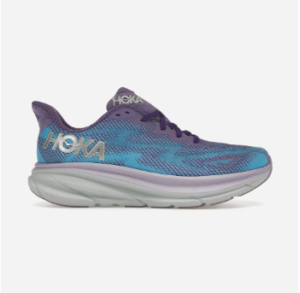 Best HOKA and Brooks Running Shoes
Best HOKA and Brooks Running Shoes
HOKA Women’s Clifton 9
Pros
- Supportive even on long runs
- A favorite for plantar fasciitis
- Cloud-like cushioning
Cons
- Can feel bulky
Weight: 8.5 oz | Drop: 5 mm
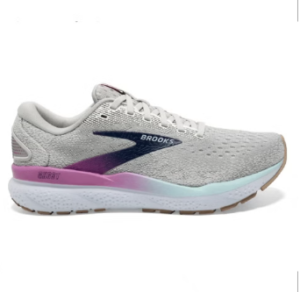 Brooks Women’s Ghost 16
Brooks Women’s Ghost 16
Pros
- Supportive and well cushioned
- Versatile
- Breathable fabric
Cons
- Testers found the shoe to be less fashionable
Weight: 1 lb 1 oz | Drop: 12 mm
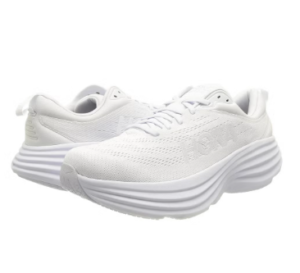 Best HOKA and Brooks Walking Shoes
Best HOKA and Brooks Walking Shoes
HOKA Women’s Bondi 8
Pros
- Unparalleled cushioning
- Stylish
- Breathable and lightweight design
Cons
- May take time to break in
Weight: 9 oz | Drop: 4 mm
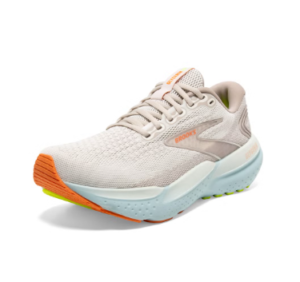 Brooks Women’s Glycerin 21
Brooks Women’s Glycerin 21
Pros
- Stable yet cushioned
- Ample arch support for plantar fasciitis
- Good traction
- Works well for running or walking
Cons
- Bulky
- Takes a while to dry after a rainstorm
Weight: 8.8 oz | Drop: 10 mm



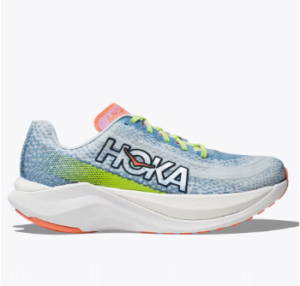 Editor Favorite HOKA and Brooks Shoes
Editor Favorite HOKA and Brooks Shoes Brooks Women’s Adrenaline GTS 23
Brooks Women’s Adrenaline GTS 23